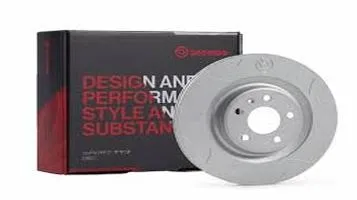Pest Control Sprays: A Comprehensive Review
Pest control sprays are specialized chemical solutions designed to manage and eliminate unwanted pests such as insects, rodents, and other organisms that can cause damage or pose health risks. These sprays are commonly used in residential, commercial, and agricultural settings to protect properties and crops from infestations. Available in various formulations, including aerosols, pump sprays, and concentrates, they offer targeted control over a wide range of pests like ants, cockroaches, mosquitoes, and termites. Many pest control sprays are formulated to work quickly, providing immediate relief, while some offer long-lasting protection. Safety is paramount; therefore, users should follow instructions carefully to minimize risks to humans, pets, and the environment. Eco-friendly and organic options are also available for those seeking sustainable pest control solutions.

When it comes to maintaining a clean and safe home environment, one of the foremost concerns for many homeowners is pest control. From ants and cockroaches to bed bugs and spiders, pests can be a major nuisance and even pose health risks. Pest control sprays have long been a staple in the fight against these unwelcome invaders. This review delves into the efficacy, safety, environmental impact, and user experience of pest control sprays, providing you with a comprehensive understanding of these commonly used products.
Efficacy
One of the primary metrics by which pest control sprays are judged is their effectiveness in eliminating pests. Modern pest control sprays are formulated with a variety of active ingredients designed to target specific pests. Chemical compounds such as pyrethroids, neonicotinoids, and insect growth regulators (IGRs) are commonly used to disrupt the nervous systems of insects or to inhibit their growth and reproduction.
In my experience, pest control sprays can be highly effective when used correctly. For instance, sprays containing pyrethroids such as permethrin or deltamethrin are particularly effective against ants, cockroaches, and spiders. They offer quick knockdown effects, meaning pests are incapacitated almost immediately upon contact. However, for more resilient pests like bed bugs, products containing neonicotinoids or IGRs may be necessary, as these compounds work at different stages of the pest's life cycle to ensure comprehensive eradication.
It's important to note that the efficacy of a pest control spray also depends on proper application. Users should follow the manufacturer’s instructions meticulously, including dosage, application areas, and frequency of use. Neglecting these guidelines can result in suboptimal performance and even contribute to pest resistance over time.
Safety
Safety is a critical concern when using chemical pest control sprays, especially in households with children and pets. While many modern sprays are designed to minimize risks to humans and non-target animals, precautions should always be taken. Look for products that are EPA-approved and follow all safety guidelines provided by the manufacturer.
Most pest control sprays recommend vacating the treated area for a specified period, often ranging from a few minutes to several hours, to allow the chemicals to settle and become less volatile. Additionally, protective gear such as gloves and masks may be advisable during application to avoid direct contact with the spray.
For those particularly concerned about safety, there are also natural and organic pest control sprays available. These products often use essential oils like peppermint, rosemary, and clove as active ingredients. While generally safer, their efficacy may not be as high as that of chemical-based sprays, especially for severe infestations.
Environmental Impact
The environmental impact of pest control sprays is another important consideration. Chemical sprays can have unintended consequences on non-target organisms, including beneficial insects like bees and butterflies. Moreover, runoff from outdoor applications can contaminate water sources and soil, adversely affecting local ecosystems.
Eco-conscious consumers should look for eco-friendly alternatives or integrated pest management (IPM) practices that combine multiple strategies to minimize environmental impact. Some brands are now offering biodegradable sprays with reduced chemical footprints, though these may come at a higher cost and potentially lower efficacy.
User Experience
User experience is a multifaceted aspect that encompasses ease of use, odor, and long-term results. Most pest control sprays come in convenient aerosol or pump spray bottles that are easy to handle and apply. However, the smell can be a significant drawback for some users. Chemical sprays often have strong, lingering odors that can be unpleasant. Natural sprays tend to have more agreeable, herbal scents but may still be overpowering for some.
Long-term results are another critical factor. While many sprays offer immediate relief, the longevity of their effectiveness varies. Some products provide residual effects, meaning they continue to kill pests for weeks or even months after application. These are particularly useful for preventing re-infestations. However, regular reapplication may be necessary for sustained control, especially in high-risk areas like kitchens and bathrooms.
Conclusion
Pest control sprays remain a popular and generally effective option for managing household pests. Their efficacy largely depends on the active ingredients and proper application, while safety and environmental concerns necessitate careful consideration and adherence to guidelines. Although chemical sprays are often more potent, natural alternatives provide safer options for households with children and pets. Ultimately, the choice of pest control spray should align with your specific needs, priorities, and values.
In summary, pest control sprays offer a versatile solution to a variety of pest problems. By understanding their strengths and limitations, you can make informed decisions to protect your home and family while minimizing risks and environmental impact.






